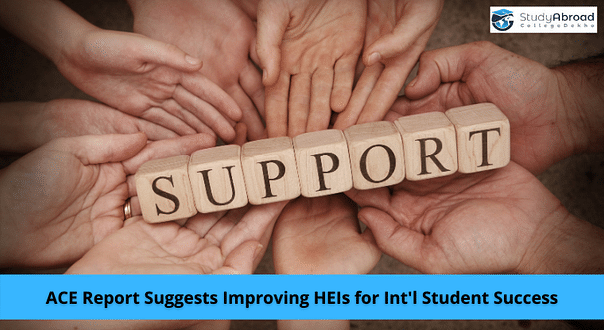With massive changes commencing across the globe, a recent report advises that the meaning of international student inclusion and success is in dire need of reconsideration, paving a path for better lifelong relationships with different international student cohorts.
As per a report, Toward Greater Inclusion and Success: A New Compact for International Students by the American Council on Education, a shakeup of strategies and practical approaches is required to facilitate a better environment for international students to blossom both academically and socially while also paving a path for their careers and new life after graduation.
Kara Godwin, an author of the report, highlighted that the call to action requests HEIs, researchers, professionals and policymakers alike to shape a different future for USs relation with international students at a global level.
President of ACE, Ted Mitchell, stated that the report will assist institutional leaders to attract international students and apply a new vision of equity, inclusion, and support. Suggesting a lifecycle approach, the document focuses on the inclusion and success of the international students in three different phases. These include; Pre-arrival of International Students, during their studies and postgraduate support.
Chris Glass, an author of the report, stated that topics such as climate crisis and sustainability, the rapid growth of access and massification, dynamic and the growing role of network technology at higher education across the globe, are a few megatrends that adjust the context of international higher education in the long-term.
In the report, the authors suggest that an unconventional conversation regarding international student inclusion and success is required. A conversation that acknowledges those risks, although increase the risks in the near future, are beneficial in creating opportunities that facilitate better results for international students later on.
Glass states that the institutions that take a proactive approach in internationalisation through sustainable development, establishing a cultural-centric student experience, expansively using network technology and offering affordable education will become more attractive.
Speaking on sustainability, Glass commented that a need to understand and recognise that the world has been on an unsustainable path assuming a limitless growth in the cross-border enrolment. Highlighting the ecological limits of the planet, Glass emphasised the need for research and education that can address these issues.
On becoming Culturally responsive, recognising that international students are often asked to adapt and change to ways of the land, a need to transform the institutions culturally and centring culture as a basis for student experience arises, instead of asking them to adopt US-centric approaches to thinking and relating. He added that diversity promotes innovation and fosters academic excellence.
Continuing his statements on Network Technology, he stated that the disruptions in technology should be viewed as opportunities to reimagine international education and come up with alternate sustainable solutions.
Also Read: H-1B Visa Selection System to Give Priority to Applicants with Higher Salaries
Ted Glass emphasised the importance of recognising affordability as a barrier to higher education in the US. With more and more international students coming from different socio-economic backgrounds, HEIs will need to work on becoming more affordable. He stated that access institutions like public regional universities and community colleges will be able to meet global demand.
Glass also emphasised the need for opening up new networking opportunities for international students and how the institutions should work to enhance these networking opportunities. Ranging from networking opportunities in academic research, faculty, community and city networks to career-based networking opportunities including employer and alumni networks, which can be enhanced through career services.
Also Read: Indian Students Contributed $7.6 Billion to US Economy in 2019-20
Glass explained that the new prospective international students are most likely to be different from the ones that have travelled to the country, previously. He added that the students expected to be more employment-focused. Therefore, more likely than not, challenges such as quality of education, safety and affordability are some of the deciding factors for choosing an HEI.
As per an ACE 2016 longitudinal study, Mapping Internationalisation on US Campuses, Kara Godwin, stated that the international student support systems were not up to the mark in the country, as they were expected to be, despite a large amount of funding being allocated to recruiting and enrolling international students.
Underpinned by American Council on Educations comprehensive internationalisation model and its December 2020 revised edition, the work suggests a more global mindset focus instead of a global mobility mindset.



















